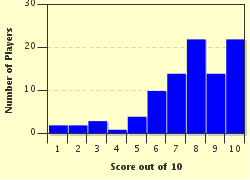Quiz Answer Key and Fun Facts
1. A microstate is a sovereign state with either a small population, a small land area, or both. This religious one is a walled territory with the smallest area of any independent European state. In which country will you find it?
2. Campione d'Italia is an exclave of Italy. It is a part of Italy completely surrounded by another country and is some 14 kilometres by road from the nearest Italian town. Which country surrounds this piece of Italy?
3. Mount Athos is a mountainous peninsula protruding into the Aegean Sea and is home to twenty East Orthodox monasteries and around 2,000 monks. In which country can you find this autonomous region?
4. The Ċland Islands lie just off the coast of Sweden in the Baltic Sea. They are an autonomous and demilitarised region at the entrance of the Gulf of Bothnia. Which country do the islands belong to?
5. The Principality of Sealand is a decommissioned Maunsell naval fort sitting on a sandbar in the English Channel about 11 kilometres from Suffolk, England. During which war was it built?
6. Skiing is the mainstay of this European microstate's economy. What is the name of this landlocked principality in the Pyrenees?
7. The Faroe Islands lie off the north of Scotland and mid-way between Norway and Iceland. An autonomous country, which kingdom has it formed part of since 1814?
8. Which German-speaking alpine principality has a talent for making false teeth?
9. A strategically important shipping base, this island country has had many different rulers including Phoenicians, Romans, Moors and Normans. It gained independence in 1964 from the United Kingdom. What is its name?
10. San Marino started as a monastic community founded in 301 AD. Which country surrounds this microstate?
Source: Author
suomy
This quiz was reviewed by FunTrivia editor
Pagiedamon before going online.
Any errors found in FunTrivia content are routinely corrected through our feedback system.

